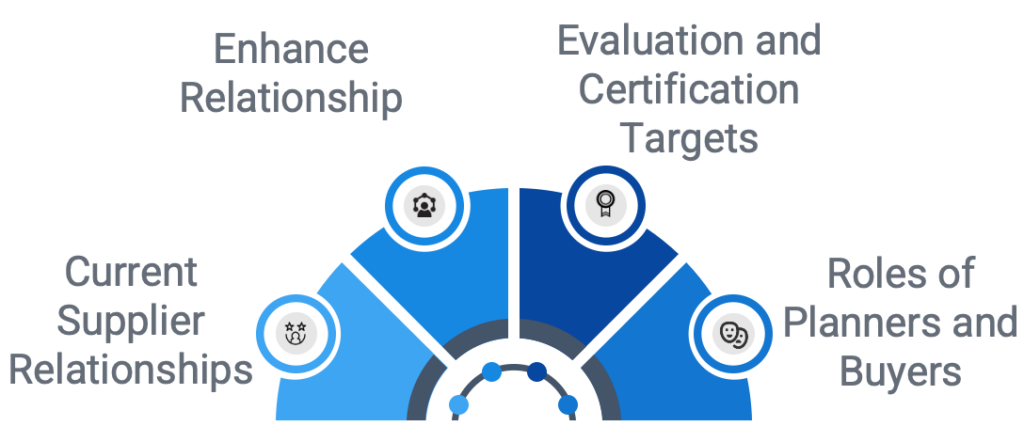When creating a successful procurement strategy, it is crucial to establish valuable partnerships with suppliers. This involves collaborating with suppliers to identify common objectives for both tactical and strategic performance. Strategic objectives may include connecting supplier product design with manufacturing processes, implementing ongoing improvement initiatives, and utilizing technology to enhance operations.
The goal of this step is to establish a culture of collaboration between buyers and suppliers, where the supply channel functions as a unified and seamless supply engine.
Determine Level of Current Supplier Relationships
In this activity, the focus is on evaluating a company’s relationship strategy with its supply partners. The aim is to identify strengths and gaps in the strategy. The activity covers various issues, including defining shared goals for purchase orders and receiving performance, linking supplier manufacturing processes and procurement requirements, identifying out-of-bounds situations, developing continuous improvement programs, and applying technology.
Apply Collaborative Strategies to Enhance Relationships
In this activity, we aim to improve our relationship-building strategies. We will identify opportunities to collaborate on joint product design, education and training, computerized networking, and agree on common performance measurements, such as on-time delivery and quality.
Establish Evaluation and Certification Targets
For this task, evaluation and certification programs can be utilized by companies to ensure the creation of product quality databases and assurance methods, which can provide documentation of quality levels. Additionally, supplier rating systems that are based on the actual performance of suppliers can also be employed as a tool.
In order to ensure that the purchaser receives products that meet their specifications and delivery requirements, suppliers are required to allow audits of their quality management systems by the customer. The purpose of these audits is to confirm that the supplier’s production processes and output conform to the necessary standards.
Determine Roles of Planners and Buyers
This stage focuses on implementing a successful supplier management plan that involves various levels of cooperative communication, namely business review meetings, supplier collaboration, and supplier scheduling. By having a communication structure that covers all three levels, both purchasers and suppliers can receive the required information flow. They can work together to decide on the participants, frequency, data to be shared, and output formats to be used at each level.

